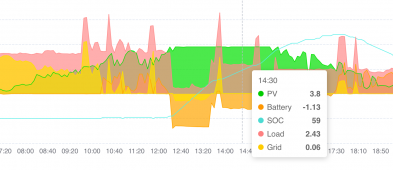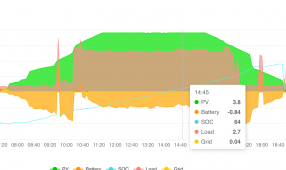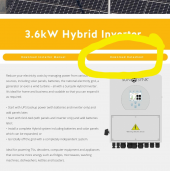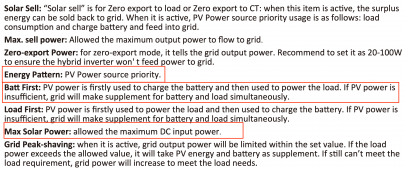Hi There,
I have had a Sunsynk 3.6Kw system installed since end of may (15 x 385w, Sunsynk 3.6kw investor, 2 x 5.12Kw batteries). the PV's have been installed on 2 strings ( 10 + 5). What I have noticed is that the PV's only ever generate a maximum of 3.8Kw and seem to be getting clipped at this value, whereas they should potentially be able to generate 5.77Kw.
Installer initially said that is how they work, but on further questioning he clarified that once the batteries are up to 100% then the PV's would be clipped to 3.6Kw. However, this is still not the case, as with the recent sunny weather I have data showing the batteries to be less than 100% and the PVs being clipped to 3.8Kw.
Is this correct, or can this be changed via software/hardware settings?
TIA



I have had a Sunsynk 3.6Kw system installed since end of may (15 x 385w, Sunsynk 3.6kw investor, 2 x 5.12Kw batteries). the PV's have been installed on 2 strings ( 10 + 5). What I have noticed is that the PV's only ever generate a maximum of 3.8Kw and seem to be getting clipped at this value, whereas they should potentially be able to generate 5.77Kw.
Installer initially said that is how they work, but on further questioning he clarified that once the batteries are up to 100% then the PV's would be clipped to 3.6Kw. However, this is still not the case, as with the recent sunny weather I have data showing the batteries to be less than 100% and the PVs being clipped to 3.8Kw.
Is this correct, or can this be changed via software/hardware settings?
TIA










